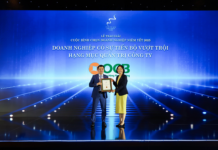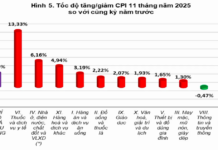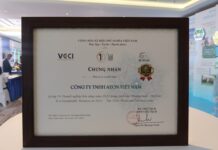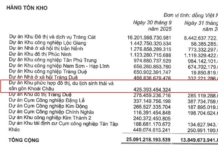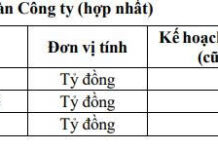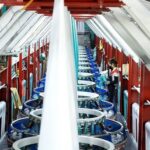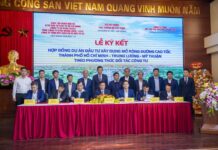At the event organized by the HCM City Fine Arts and Wood Processing Association (HAWA) in coordination with Amazon Global Selling Vietnam on December 17, Ms. My shared that, besides the US being one of the largest home furnishing markets in the world with steady annual growth, Vietnam has the advantage of a well-developed wood product industry with a network of over 5,500 businesses.
Unlike the textile or footwear industries, wood products have the advantage of independence in terms of raw materials, as they do not rely on imports from other countries. Add to that competitive labor costs and skilled craftsmanship, resulting in a diverse range of products and notable growth rates.
“Being based in Vietnam is already a competitive advantage,” according to the representative of Amazon in Vietnam, who acknowledged the government’s effective trade policies with export markets, especially regarding taxes, to support businesses.
Another point worth noting is the high anti-dumping duties the US imposes on some countries, which can reach up to 200%. Ms. My considers this a “golden” opportunity for Vietnamese businesses. This has attracted many countries to source products from Vietnam to benefit from the “made in Vietnam” label.
Sharing the same view, Mr. Truong Nguyen Phuoc Sang, representing Leaping Ape Logistics, cited beds as one of the most advantageous products due to the import taxes that China and other countries are bearing, which stand at 260% when entering the US, while Vietnam’s rates are negligible in comparison.
Statistics from Statista, presented by the representative of Amazon Vietnam, showed that the home furnishing market through e-commerce in the US is growing steadily and sustainably. It is estimated that by 2029, this market could grow by approximately $52 billion to reach a value of $177 billion. Selling through Amazon, a cross-border e-commerce platform holding more than 40% market share in North America, will be a significant advantage for Vietnamese products.
Amazon has expanded its reach to 22 markets with over 400 fulfillment centers. The platform boasts around 200 million loyal customers who are willing to pay for certain benefits and privileges. In 2023, Amazon’s revenue reached $575 billion, doubling its revenue from 2019.

Ms. Nguyen Yen My at the seminar. Photo: Tu Kinh
|
Favorable but Not Without Challenges
Unlike traditional business models, e-commerce platforms allow manufacturers to directly reach end consumers (B2C) instead of going through multiple intermediaries. However, success requires a serious and committed approach from the outset.
At the seminar, Ms. Nguyen Luong Nha Y, representing Long Thanh Company – a business with 25 years of experience in wood product manufacturing but only selling on Amazon for over a year – shared that transitioning from B2B to B2C is already a significant change for businesses, but B2C through Amazon is “extremely different and complex” due to the long cash flow cycle.
In the case of Long Thanh, after spending one month producing the goods, the first shipment from Vietnam to Amazon’s warehouses in the US took an additional 1.5 to 2 months. The company always aims to ship enough products to sell for three months but, according to Ms. Y, “not too much,” as after this period, storage costs start to increase, affecting profit margins.
The company estimated that it could take up to 6 to 7 months to receive full payment for the first batch of goods. However, before the first batch is completed, the second batch must be shipped to ensure sales in the fourth and fifth months. As a result, the company has to fund two batches of goods, even though payment for the first batch has not yet been received.
Cash flow is just one of the challenges Vietnamese businesses face when aiming to enter large markets like the US. Additionally, complying with Amazon’s standards is considered equally complex.
Despite the challenges, the profit potential is significant once a product is accepted by American consumers. Ms. Y’s company experienced a fivefold increase in revenue compared to their initial plan within a short period by strictly adhering to Amazon’s requirements and leveraging third-party support.
“We took Amazon very seriously from the beginning, so we quickly engaged a third party to handle external matters, while our factory focused solely on developing the best and highest quality products for consumers,” shared the company representative, “But if you’re not serious, the failure rate will be very high because Amazon is very transparent, and it is an excellent platform for factories with good products, as it requires a lot of resources and financial investment upfront.”

Ms. Nguyen Luong Nha Y, representing Long Thanh Company, shared her experience selling on Amazon. Photo: Tu Kinh
|
“UAE’s Top Businesses Seek Vietnamese Partnerships”
Looking ahead to 2025 and beyond, the CEPA initiative will foster enhanced collaboration across a multitude of sectors. With a focus on trade, investment, economics, industry, energy, renewables, and logistics, this initiative will drive a new era of cooperation and growth.
The Tech Titan’s Half-Billion Dollar Project: A Dynamic Shift
Luxshare-ICT Vietnam is a leading global manufacturer and assembler of electronic devices. With an impressive portfolio of clients, including some of the biggest names in the world such as Apple and Samsung, the company has recently announced plans to expand its production capacity in Bac Giang province. This expansion will see them produce and process tens of millions of new products, further solidifying their position as an industry leader.
“Incentivizing Investment in Sustainable Smart Industrial Parks: A Policy Mechanism for Vietnam’s Future”
A myriad of experts advocate for a policy mechanism that incentivizes investment in, and the development of, new-generation smart and sustainable industrial zones. This includes delineating specific standards and criteria for what constitutes a “green” industrial zone, as well as establishing a clear framework of incentives and support for investors and industrial zone developers who wish to embark on new projects or transition from old models to these new-generation zones.






